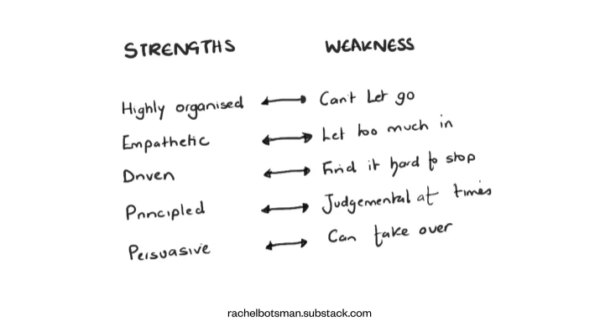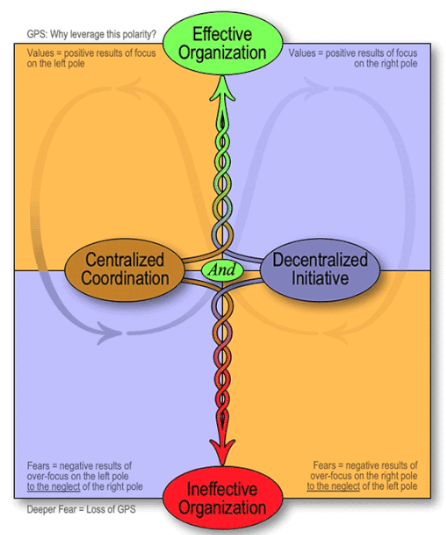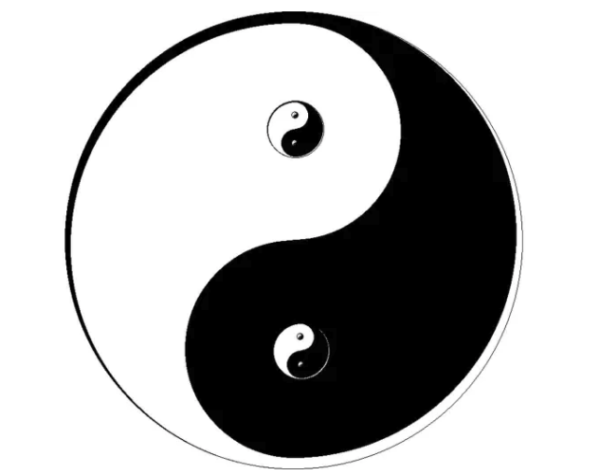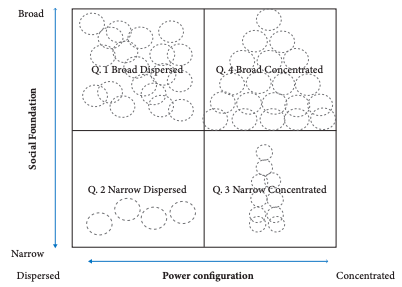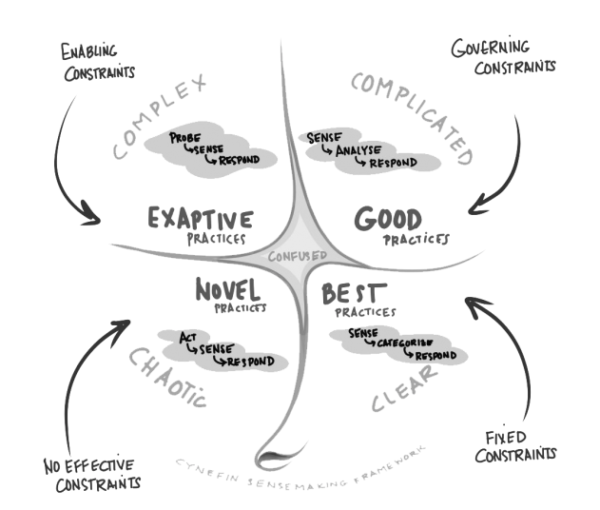
Introduction
When I’m feeling bold, I describe what I’m trying to do in my current phase of work (and life) as co-creating living, learning and loving systems, and doing that by embracing complexity, nurturing relationships and catalysing collaborative learning.
What I want to be doing practically is working with a handful of initiatives or organisations that are focused on supporting collaborative learning and nurturing kinder relationships, in order to strengthen the adaptive capacity of people – and the systems we bring into being – to address complex social challenges.
What I’d love to be doing is working with four or five organisations, supporting their individual efforts, facilitating collaborative learning amongst them, and sharing the insights that emerge with a wider field of organisations working out how best to address complex social challenges, within and beyond the UK, to inform their efforts.
As I move forward in this direction, it’s important to me that I operate in ways that are in line with the living, learning and loving systems that I want to play a part in co-creating. Be the systemic change you wish to see! In his wonderful book Sand Talk, Tyson Yunkaporta suggests “connect, diversify, interact and adapt” as four “operating guidelines” or “network protocols” that one should follow to be an agent of sustainability in a complex system (see p.98 of Sand Talk, and/or here for helpful reviews and a good video).
Ways of seeing, and rules of thumb for being, in a complex social landscape is something I definitely plan to return to (re-reading Jeremy Lent’s book, The Web of Meaning, is high on my list). For me, for now, operating with awareness, responding to resonance and engaging creatively are three rules of thumb to bear in mind:
- Participating in systems in ways that are informed by a broad awareness of the landscape of actors, and the relationships and processes that make systems what they are; trying to live from an eco-system, rather than an ego-system, perspective.
- Responding to resonance and going where the energy is, investing my time and resources in ways that feel like they might bear fruit; and
- Engaging in ways that nurture the sorts of relationships that animate systems, make them more than the sum of their parts, and help to support the collaborative learning that enhances their adaptive capacity and effectiveness.
Sparks of engagement and questions for reflection
So, how’s it going?
Over the course of the last month I’ve had the pleasure of connecting with lots of interesting and inspiring people, exploring our overlapping interests and the scope for deeper collaboration. I am very grateful to be part of such a vibrant network of curious, creative and kind friends and colleagues, and excited about what we might do together. Much of my engagement has been around relational approaches to systems change, on which I was happy to share my collated resources from the Collective Change Lab.
Starting tomorrow, I plan to share some additional sparks of engagement and reflection; things that I became aware of, that resonated with me, that led me to engage, and stimulated some reflection. With my sparks of engagement and reflection formulated as learning questions, tomorrow – inspired by how to be strong and weak, by Rachel Botsman – kicks off with:
How can thinking in terms of continuums help us to understand and act more effectively in the contexts of complex systems?
My hope is that some of the questions I’ve been exploring through the connections I’ve made over the last month will resonate with you, sparking further connections, catalysing collaborative learning and leading to more effective action. Or simply that you might find them interesting. Let’s see!
Continuums, complexities, contexts (Question 1)
Yesterday, I introduced my plan to share a number of sparks of engagement and reflections that have been stimulated by my recent explorations in embracing complexity, nurturing relationships and catalysing collaborative learning for social change.
I’m sharing these as bite-sized pieces, with my sparks of engagement reformulated as learning questions. For each question, I’ve included links to the initial spark of engagement, and then shared my subsequent reflections.
I hope that you find something of interest. More ambitiously, my hope is that over time, the various questions, reflections and related conversations they are part of will cross-fertilise, growing an evolving network of thought, or a garden of ideas, to inform more effective systemic and collaborative action for social change. That’s the plan!
How can thinking in terms of continuums help us to understand and act more effectively in the contexts of complex systems?
Engagement: My comment on Rachel Botsman’s recent piece on how to be strong and weak, and on the transformative value of thinking in terms of continuums. Rachel’s piece was a recent edition of her thoughtful and practical “Rethink with Rachel” newsletter.
I was particularly struck by the emphasis Rachel places on context, situational awareness and deciding how to act, and most especially by the encouragement to think in terms of continuums, rather than opposites or binaries. This resonated strongly with me, reminding me of a rich period of personal and professional exploration and growth that was informed by the work of Barry Johnson on what he refers to as “polarities”. (See From polarized to energized for a good introduction, this video discussion with Barry Johnson for a fuller explanation, and the Polarity Partnerships website for more). If you’re really interested, I might even share the dynamic diagram I used to help me get from where I was in 2021 to where I am now!
Somebody might tell me that this is just user-friendly dialectics, complexity science 101, and timeless yin and yang, and perhaps it is. But my sense is that thinking about things in terms of continuums, and the relationships between the two (or more, if we up the dimensions) ends of a continuum, is an important step towards getting a feel for the dynamics of systems and being able make good decisions about how to act with systemic awareness.
More specifically, it seems to me that the integrity (meaning how well a system is integrated, and the ways in which it is more than the sum of its parts) and effectiveness of a system – and perhaps how compassionate and loving it is – is shaped by the balance that emerges between the interdependence and autonomy of its constituent parts. If this strikes a chord with you, or you’re keen to explore more, please do give me a shout.
Patterns, power and systems: Shifting the deckchairs or turning the ship? (Question 2)
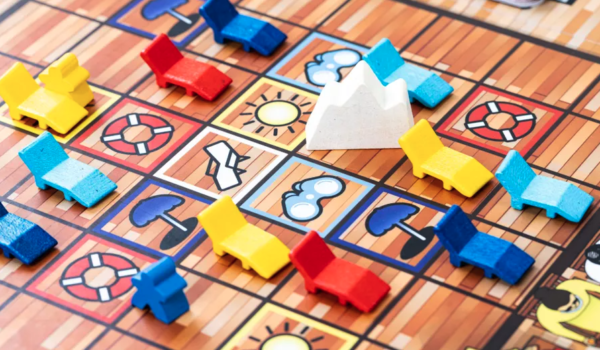
Last week, I started to share a number of sparks of engagement and reflections that have been stimulated by my recent explorations in embracing complexity, nurturing relationships and catalysing collaborative learning for social change.
After an introductory post on awareness, resonance, engagement, reflection, I then shared some reflections about continuums, complexities and contexts, beginning with a recent piece by Rachel Botsman, flowing through polarity mapping, and oscillating on to yin and yang!
Between now and the end of March, I plan to share reflections on three additional learning questions, before concluding – for now – with some wider reflections about awareness, inquiry and complexity. I hope that something I share sparks your interest.
So, on to question 2!
To what extent and how can new models of governance, and different organisational forms, help to shift the power dynamics that hold systems in place?
Engagement: Firstly, my comment on a piece on “Decentralizing Organizations”, by the Systems Innovation Network. Secondly, my effort to connect the emerging work of the Systems Innovation Network on governance and complexity, led by Misha Kaur, Adriana Rantcheva and Joss Colchester, to the rich experience of the Open Government Partnership over the last decade and more.
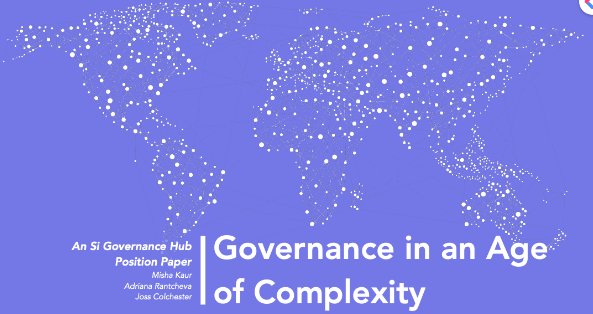
These two sparks of engagement are about patterns, power and systems. Or, more fully, whether and how new models of governance – for instance the open, multi-stakeholder and co-creational model that the Open Government Partnership promotes and nurtures (see their updated strategy), or decentralised and distributed organisational forms (governance at a more micro scale) – can help to shift power, change system dynamics, and generate better outcomes at a more macro scale.
This question, to me, is part of a broader discussion about the role that power plays in shaping the dynamics of systems, or governance, and what that means for system change initiatives. See also my review of “Unpacking systems change philanthropy” by Paulo Savaget and colleagues in my February piece on living, learning and loving systems, and my dream that “systems change initiatives set out explicitly how their modes of intervention are expected to shift the power dynamics that hold problems, and systems, in place.”
My engagement with parts of the anti-corruption community has made me somewhat sceptical of approaches to addressing governance challenges that fiddle with form or implore powerful players who benefit from the status quo to play nicely, rather than seriously engaging with the power dynamics and patterns of incentives that drive actions (see also Dan Hough’s reflections on turkeys, voting and christmas after December’s International Anti-Corruption Conference).
Nonetheless, I do think that exploring more seriously how different models and forms, or patterns, of governance might make a difference to the capacity of actors, the nature of their relationships, the dynamics of systems, and ultimately the outcomes that emerge, would be a fruitful endeavour. The Asia Foundation’s recent reflections on the coalition building initiatives it has been involved in – where the approach has been to foster relationships between powerful actors, while amplifying the voices and influence of those less powerful – provides rich food for thought (see On the Right Tack).
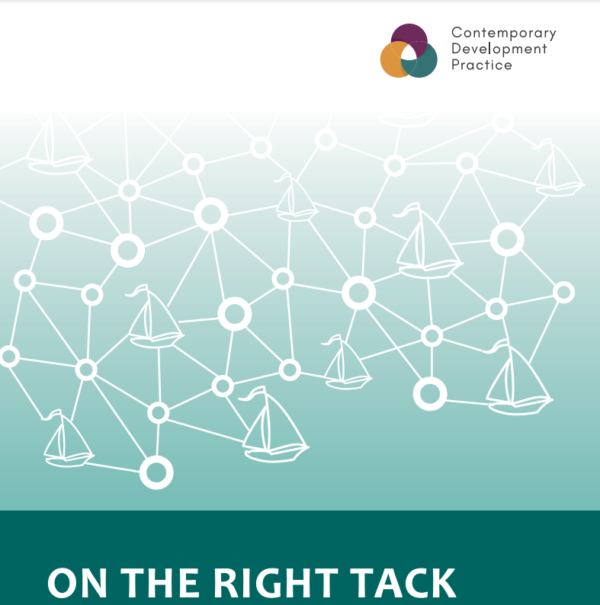
Another interesting path I plan to explore more comes through the work of Anna Birney and Adam Kahane. There are two pieces in particular that I plan to revisit as launch pads to wider exploration.
First, Anna’s piece on power dynamics, a systemic inquiry, in which Anna points to helpful questions around the relationship between new patterns of organising (new system dynamics), changes in the nature of our relationships, and shifts in the dynamics of power. Second, a wonderful conversation on power and systems change between Anna, and Adam Kahane, two people with huge experience of facilitating conversations and flows of energy and awareness in order to nurture healthier dynamics in complex and often conflictual systems.
I very much appreciate Anna’s emphasis on living systems and facilitating the systemic flow of life, and have been inspired by her practice of living the questions. I also feel that Adam’s thinking about the complementary roles of power (autonomy and interdependence, in terms of the polarities of my continuums blogpost), as well as justice, in the emergence of kinder, healthier and more effective systems is a very fruitful area to explore. Given the very strong echoes of polarity management in Adam’s recent book on transformative facilitation (excerpt here), and removing the obstacles to effective collaboration, I’m excited to learn more.
More, soon, on typologies, emergent learning and complexity in context!
Grains of truth: Contexts, typologies and learning, for governance reform (Question 3)

Two weeks ago, I began to share a number of sparks of engagement and reflections that have been stimulated by my recent explorations around complexity, relationships and collaborative learning, for social change.
I’m sharing these as bite-sized pieces, with my sparks of engagement reformulated as learning questions. For each question, I’ve included links to the initial spark of engagement, and then shared my subsequent reflections.
I followed up with some reflections about continuums, complexities and contexts and then last week shared some reflections on patterns, power and systems.
Responding to reader feedback, I’ve relaxed the pace of publication to a weekly-ish rhythm. Thanks Julia and Rachel!
So, question 3!
How might typologies of different political economy contexts support the in-context emergent learning that is needed to address complex challenges?
Engagement: My comment and broader discussion around Duncan Green’s review of “Political settlements and development: Theory, evidence and implications (here, on open access), by Tim Kelsall and colleagues, about the value of typologies of political context of the sort shown in figure 3.4 of the book.
This question, to me, is part of a wider set of discussions. First, about the ways in which context (including political economy dynamics) shapes the prospects of governance reform and effective policy implementation. Second, about the implications of context mattering a lot for the development of cross-contextual knowledge and understanding, and the use of such knowledge and learning to inform locally-led efforts to address complex social challenges in different contexts.
For me, typologies of contexts are useful to the extent that they support the emergent learning that is needed to address specific challenges with complex causal dynamics in particular contexts. So then the question is what sorts of typologies of context can best support efforts to understand and address the dynamics that hold specific challenges in place in particular contexts, and how can they help?
Somewhat surprisingly, given my long-standing enthusiasm for establishing learning loops that link practice and theory, I’ve been a bit sceptical about the value of typologies of context. (For an early exploration of the quandaries of “mapping context” with colleagues at the Overseas Development Institute, see this piece from 2006, particularly pages 1-3). While I like them conceptually, and have very much appreciated the typology-heavy contribution that Brian Levy has made to sharper thinking and practice on governance and working with the grain, (see also his more recent pieces on governance contexts and reform in the education sector, here), I’ve always had questions about whether and how such typologies add practical value to the work of policymakers – especially local policymakers who know their contexts well – in particular places.
On further reflection, and perhaps not before time, I’m beginning to see more clearly how the use of such ideal types might support efforts to address specific challenges in particular contexts, by providing a frame of reference for the application of information, evidence and insights from other contexts. That is, a typology – or perhaps better still, a continuum with different contexts placed on that continuum (see my recent reflections on continuums, complexities and contexts) – might facilitate reflection, enhance situational awareness, and make it easier for actors in a particular place to find and apply relevant learning from the experience of other players in different places.
Combine that with the super-helpful mechanism-mapping approach set out by Martin J. Williams to assessing the scope for policy adaptation across contexts (long version; short version), and you would have a pretty powerful approach for cross-context learning that informs more effective in-context action. No doubt someone is already doing this. If that’s you, or if that piques your interest, do drop me a line.
More next week on ways of assessing change and understanding the complex and contextual causalities that characterise living and learning systems.
Understanding and evaluating complexity: Data, evidence and models (Question 4)
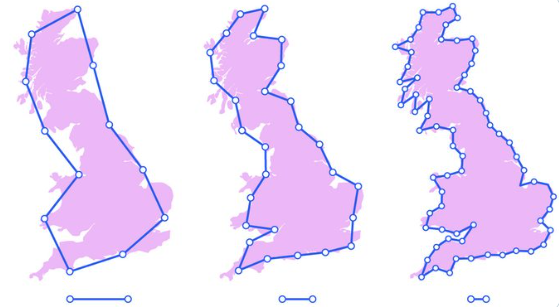
Three weeks ago, I began to share a number of sparks of engagement and reflections that have been stimulated by my recent explorations around complexity, relationships and collaborative learning, for social change.
I’m sharing these as bite-sized pieces, with my sparks of engagement reformulated as learning questions. For each question, I’ve included links to the initial spark of engagement, and then shared my subsequent reflections.
Having set the scene, I followed up with some reflections about continuums, complexities and contexts, then some musing on patterns, power and systems, and most recently some thoughts about contexts, typologies and learning.
In early April, the plan (fingers crossed for synthetic systemic fortune!) is to see how these posts amount to more than the sum of their parts, and what insights the process of producing them has generated. But before then, we have question 4 to explore.
So, let’s go!
How might we further develop and encourage the use of approaches to evaluating and understanding change that are suitable for the complexities of living and learning systems?
Engagement: My re-sharing and amplification of Tom Aston’s excellent piece about the persistence of the damaging myth that experimental methods such as randomised controlled trials are a “gold standard” for evaluation, including for complex systems.
In too many cases, the approaches taken to understand the dynamics of change and to evaluate the impact of engagement in complex systems are – with their simplistic assumptions about causality, and their belief in the ability of experimental approaches to meaningfully isolate pathways to impact – the wrong tool for the job. In too many spaces and institutions, as Tom puts it, “the RCT-industrial complex has truly gotten out of control”.
The question is how to move beyond a methodological conflict that stubbornly persists, despite some encouraging signs five years ago with the apparent mellowing of Innovations for Poverty Action and J-PAL (see for instance, the generalizability puzzle, by Mary Ann Bates and Rachel Glennerster).
There are some grounds for hope. For instance: in the increased attention to causal pathways and non-experimental ways of trying to understand causality shown by some funders; in the increased respect for and attention to the value of emergent learning; and in the innovative approaches to evaluation being discussed in UNDP’s M&E Sandbox series (see for instance, the recent discussion of the experience of Luminate, the BHP Foundation and Humanity United).
Continued sharing of different organisations’ experience – the challenges they’ve faced as well as the progress they’ve been able to make – and whether it goes far enough (check the question/response from Toby Lowe and Kecia Bertermann at 1 hour, 21 minutes, 10 seconds of the recent sandbox video) will help. As will realism and pragmatism about the accountability constraints, reporting requirements and associated power dynamics, that many actors working within this space need to navigate; ignoring or dismissing questions about results and what works is not a good strategy.
Beyond this, careful and constructive systems leadership by a powerful player or two – step forward for instance, USAID, the Center for Global Development, the Bill & Melinda Gates Foundation and leading European donors (perhaps the UK and FCDO are still European and leading?), as well as innovative funders more embedded in the global south (perhaps UNDP’s M&E Sandbox can help to identify these?) – could make a big difference.
On which note, a recent post by Ruth Levine may well be of interest. Ruth is a long-time and powerful champion of evidence-based policy and the “what works” agenda, with a career that runs from multilateral development banks, the Center for Global Development, USAID, the Hewlett Foundation and most recently IDinsight, with a move to the Packard Foundation on the near-horizon (see Ruth’s wonderful explanation of her decision). In her always interesting Friday notes from 3rd March, Ruth reflects on the mis-placed envy amongst some in the global development space for what she refers to as the medicine model of how to get to policies that are more effective because they are evidence-based.
The alternative model that she outlines – a market of producers and consumers of policy advice – raises lots of questions for me, and/but also opens up the space for a much-needed discussion about how we might move beyond a failing medicine model for evidence-informed policy. As Ruth notes, the currently dominant evidence-based medicine model “is not helping us move the ball forward as fast as demanded by the crucial social and environmental challenges we face.”
The question of how to understand and evaluate complexity, and the question of what might be a better model for evidence-informed policy are not the same question. But they are very close cousins, with worldviews, evidence, learning and policy engagement as their grandfathers and grandmothers. I look forward to continuing to explore how those of us who share Ruth’s view, can continue to learn about the potential of different approaches to understanding and evaluating the complexities of living and learning systems and using evidence to improve them, and move the ball forward with the urgency required.
Next time, fingers crossed, systemic and synthetic reflections on awareness, emergence and learning.
As a side note / historical artefact, my 2011 take on the early enthusiasm for RCTs in revitalising the fight against poverty – a take that surprises me with its balance and is no doubt shaped by the One Campaign context I was in – can be found here. My earlier still reflections on complexity, emergence and measurement from a short-lived DFID perch can be found here.
Awareness, engagement and emergent learning questions
In early March, I began a series of pieces arranged around the theme of awareness, resonance, engagement and reflection. These pieces were part of my effort to develop ways of being that are in line with the workings of the living, learning and loving systems that I want to play a part in co-creating. Be the systemic change you wish to see, as I ambitiously put it!
Rules of thumb and learning questions
Over time, a useful way of being in complexity may emerge. Perhaps a pattern that revolves around something like probe, sense, respond (Dave Snowden and Cynefin), connect, diversity, interact, adapt (Tyson Yunkaporta – see the final paragraph of systems, stars and constellations), or the cycle of sense, feel, respond, reflect that I had stuck to my monitor a couple of years ago.
But for now I needed to start somewhere and chose to begin my explorations with the following three rules of thumb: operate with systemic awareness; respond to resonance; and, engage creatively, to nurture more vibrant and adaptive systems.
Guided by these rules of thumb, and selecting topics that had caught my attention and stimulated my engagement during the previous month, I explored the following themes, framed as learning questions:
- Continuums, complexities, contexts: How can thinking in terms of continuums help us to understand and act more effectively in the contexts of complex systems?
- Patterns, power and systems: To what extent and how can new models of governance, and different organisational forms, help to shift the power dynamics that hold systems in place?
- Contexts, typologies and learning: How might typologies of different political economy contexts support the in-context emergent learning that is needed to address complex challenges?
- Understanding and evaluating complexity: How might we further develop and encourage the use of approaches to evaluating and understanding change that are suitable for the complexities of living and learning systems?
Cultivating connections and finding a balance
In sharing these reflections, my hope was that they might resonate with others, spark further connections, catalyse collaborative learning and lead to more effective action. More ambitiously, my hope was that sharing my reflections might help to cross-fertilise and connect the various questions and conversations they are part of, nurturing an evolving network of ideas to inform more effective systemic and collaborative action for social change.
So, how’s it gone?
I’ve been very pleased with the engagement that has resulted from the posts that I’ve shared. I’ve deepened my connections with existing contacts, made new connections, and connected friends and colleagues of mine who hadn’t previously been in touch, all of which I’ve found very enriching and energising. Whether, how and to what extent this relational work has been useful for the people I’ve been connecting with is a different question, but if choosing to be in touch is a good proxy for the value that people place on a relationship, then things are going well!
More immediately, the process of sharing, reflecting and connecting around the four pieces I published and the learning questions they explored, has been very productive for me. The process has sparked additional reflection and helped me to make richer conceptual connections, for instance in two areas. One, between typologies of context and continuums of action. Two, between the dynamic balancing that drives a system (think yin and yang, and the notion of interdependent origination) and the integrity, adaptiveness and effectiveness of that system. And three – a bonus work in progress – amongst the typologies and continuums of one, and the dynamic balancing and adaptiveness of two!
For more on balance, integrity and harmony, check out this short video (half way down the web page) on integrative transformation as a balance of differentiation and linkage, by Dan Siegel who I’m excited to see will be part of the Inner Development Goals Summit in October.
Put more practically, and not very neatly (but such is life!), the sharing, reflecting and connecting has enhanced my appreciation of the fact that when you are deciding what action to take (a way of being, for a specific point in time?) in a complex system, it’s useful:
- firstly, to get a sense of, and consider, the dynamic balancing – including around interdependence / autonomy – that drives the system that you are part of, and the sorts of actions you might take, and connections you might make, to shift those dynamics and the powers that drive them; and
- secondly, to do that in a way that emerges from an awareness that comes from zooming in and out, finding a dynamic balance between focused awareness on the specific challenge and/or context in question, and a broader more systemic awareness of other and wider contexts and connections, so as not to lose either perspective or focus. Check out Zoom by Istvan Banyai, for a graphic reminder of why this matters (thanks to Florencia Guerzovich for helping me to find this video!)
Living the questions
The process of sharing my reflections on specific learning questions has provided further food for thought as regards finding a helpful balance of types of awareness. Inspired and encouraged by Anna Birney’s focus on questions and living inquiries, as well as by the work of Tiago Forte on building a second brain and choosing what information to capture, and Krista Tippett – from Rainer Maria Rilke – on living the questions, I’ve certainly found it useful to have some learning questions in mind.
This has helped to give some structure to my explorations; a focus for my awareness, some scope for my resonance, a guide for my engagement, and a support for my reflection on what is emerging. But, in making use of learning questions, it seems important to employ them creatively and hold them lightly, staying open to awareness and insights that go beyond one’s learning questions, while at the same time (loopy continuums and polarities again!) using them with discipline, at least until better questions emerge.
Beyond the writing that I did in March, I’ve also been making progress on other fronts.
- The work that I’ve been doing with Jeni Tennison, Tim Davies and Obioma Egemonye at Connected by Data, has helped to inform the thinking of the Joseph Rowntree Foundation about the sort of informational or insight infrastructure that might support more effective action against poverty and inequality.
- I’ve been having wonderful and interconnecting conversations about the role of data, evidence, models and stories as part of systems practice with Cheyanne Scharbatke-Church and Diana Chigas at the Corruption, Justice and Legitimacy programme, and with Cynthia Rayner at the Collective Change Lab’s Systems Storytelling Initiative.
- I’ve been excited to discover the thoughtful, pragmatic and creative work of Robbie Gregorowski and his colleagues at Sophoi on results, sensemaking, and learning. Watch this space for more on the approach that they’ve developed to understanding and supporting change in complex social systems,
- I’ve enjoyed a number of MEL for complexity discussions: a UNDP sandbox event on how to track and report on progress; a Wasafiri Consulting event on measuring impact featuring Toby Lowe; and an ITAD-hosted event on technical innovations in MEL which included contributions by Marcus Jenal and Kecia Bertermann (here, blogs by Marcus and Kecia, here and here).
- I’ve been exploring the possibility of playing an advisory role with a funder that is serious about operating in the learning-centred and adaptive ways that are needed to support change in complex systems.
- I’ve been happy to play an active role in the community of folks developing Tana (video review by Shu Omi, here), a new tool for networked thought, which I’m hoping will support richer systemic awareness and more effective action.
- And last, but definitely not least, on the international day of happiness I shared a piece about creating synergies by better integrating the various things I do across my life-system!
If the things I’ve been exploring resonate with you, and you’d like to connect and share, feel free to drop me a line. If we’re doing complementary things, I’m open to collaboration. And if you’d like to be looped in for future updates, please add your name and email address here.

